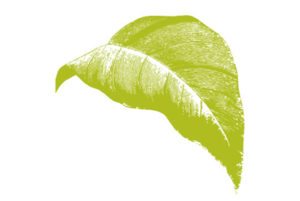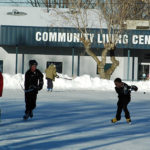Home »

Working collaboratively to preserve Elk Valley watershed
Story by Nicole Trigg
Kootenay Conservation Program
A transplant from Australia, Chad Hughes is the new executive director for the Elk River Alliance and is keen to apply his diverse background as an ecologist and mining consultant to working collaboratively across sectors in the Elk Valley to preserve the watershed.
“The Elk River Alliance is not against industry,” he said. “Without resource extraction the Elk Valley and the economy would be very different, but at the same time we need to be aware that we do live in an environment that needs to be taken care of.”
Originally from Perth, Australia, Chad earned his Bachelor in Environmental Sciences from the University in Western Australia, majoring in land and water management and botany, then proceeded to work for a number of years as an environmental scientist and botanist throughout the Australian outback.
“By the end of it, you could throw me out of a helicopter into the middle of the desert and I could probably tell you where I was just based on the vegetation.”
Shortly before his 31st birthday, he decided to apply for Canadian work visa on a whim and was approved.
“I called a friend who used to live in Canada and asked where is cool and he said Fernie. I came straight to Fernie with plans to ski for one winter and I’m still here,” Chad explained with a laugh.
Transitioning to professional work in Fernie, Chad spent a year working for the Ktunaxa-owned Nupqu Development Corporation doing environmental monitoring for mining operations before joining the Elk River Alliance in 2019 as a program manager. He stepped into the role of Executive Director in 2020. Chad has also been a board member for the Columbia Basin Watershed Network and a Wildsight volunteer.
“I like the idea of using my skill set to further environmental knowledge and understanding, I have a good solid practical understanding of how things work in the mining industry so it’s nice to use that for positive change.”
Like many organizations, the Elk River Alliance was impacted by the COVID-19 pandemic at the outset, losing staff and project funding. Having since recovered, ERA is planning a suite of ambitious projects for 2021 throughout the Elk Valley. Expanding their community-based water monitoring program to include more streams and instigate a water monitoring collective tops the list.
“In the long term, we’re looking at having an Elk River Water Monitoring Collaborative so that we’re not looking at individual areas with individual problems, we’re looking at cumulative effects,” Chad said. “We’d also like to increase two-way facilitation of dialogue with the Ktunaxa Nation Council so they have more of an input into how we work with regards to water quality because that does need to be recognized and they do have that expertise in the historical knowledge and understanding of how the environment works.”
In addition to monitoring more streams for water quality, a temperature study will establish a record of long-term changes into the future to help identify which streams are going to be the least impacted by climate change and most likely to become critical refuges for the listed Westlope Cutthroat trout, for example. A hydrological study will look at water volume.
“As snow, rain and temperature patterns change, the volume of these creeks is going to change,” said Chad. “It could be that some of these creeks lose so much volume that they’re no longer viable for fish or for fish spawning. The only way to understand what’s happening and to have a good idea of what might happen in the future is by establishing some trends as soon as possible.”
Another project, Stormwater Solutions, aims to prevent an excess of pollutants from entering the main stem of the Elk River.
“As Fernie and other urban and sub urban areas of the Elk Valley get bigger, there is going to be a larger catchment which means more water is running off roofs, roads, gardens, etc. and that’s going to produce stormwater that isn’t as pristine as it would be in the natural environment. Stormwater Solutions is basically trying to encourage residents to change their behaviours by producing cleaner stormwater so that when it gets into the Elk River it’s not full of pesticides, pollutants, heavy metals and whatnot.”
A component of this project is encouraging healthy wetlands and an innovative demonstration is planned for 2021 whereby a floating wetland island will be installed at Maiden Lake in Fernie to show how wetland elements can be introduced to help filter and clean water.
ERA also hopes to begin a Cottonwood project this year that will involve pulling together a working group to decide on criteria for management conservation and identify areas that need to be protected and restored.
“Though Cottonwood forests are red and blue listed in B.C., it is reasonably healthy in the Elk Valley. The issue is that if we don’t take care of it, the Elk Valley will become more developed and the Cottonwood will become more fragmented, disturbed and degraded and then we lose all of the important ecosystem functions that come out of Cottonwood forests.”
“The Elk River is incredibly important, but it’s not just a river running north to south, it’s all of these tiny and larger tributaries, and it’s the mountains that feed into what’s happening below the surface and above the surface, and every elk, every moose, every person has an effect on that,” said Chad. “There needs to be a balance and that’s where the Elk River Alliance fits in, bringing these groups together to look at how can we manage the watershed sustainably.”
Visit the Elk River Alliance website to learn more and sign up for their newsletter.
The Kootenay Conservation Program (KCP) is a partnership of 80 organizations that work together to protect clean water, conserve important wildlife habitat, and steward the land to allow for healthy, functioning ecosystems in the East and West Kootenay. Learn more at www.kootenayconservation.ca.








